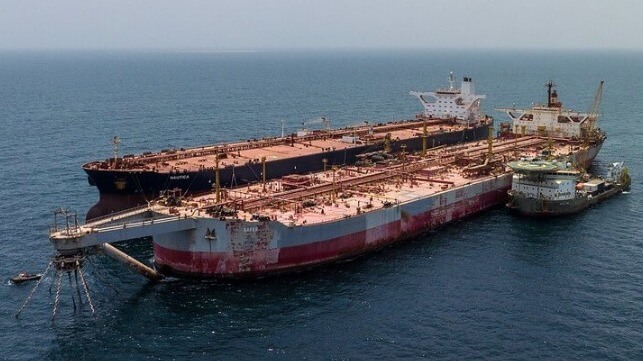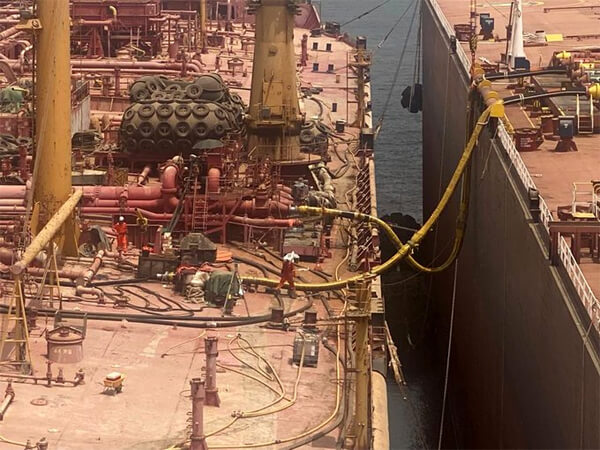Oil Transfer from “Time-Bomb” FSO Safer Completed UN Reports

All the crude oil that can be pumped from the tanks of the derelict FSO Safer positioned off the coast of Yemen has been successfully removed UN officials announced on Friday. They are taking satisfaction in the key milestone noting that it was years in the making and is adverting the potential for a catastrophic environmental disaster that would have impacted the wider Red Sea region.
Officials from the United Nations Development Program, which was overseeing the operation, and Boskalis’ SMIT Salvage are reporting that approximately 1.1 million barrels of light crude were successfully transferred in the ship-to-ship transfer that began on July 25. They are estimating that less than two percent of the original oil cargo remains aboard the FSO Safer mixed in with sediment.
Boskalis CEO Peter Berdowski highlights that the SMIT team had been on site since the end of May after more than two years of planning and working with the UN to prepare for the operation. The salvage team had conducted the first comprehensive survey of the Safer in years determining the status of the structure, tanks, and cargo. Safety measures were put in place in preparation for the transfer including a portable inert gas system to maintain the stability of the storage tanks on the Safer, and oil nets between the Safer and the replacement tanker.
The replacement tanker acquired by the UN from Euronav and given to Yemen arrived alongside on July 23 in preparation for the transfer. Renamed the MOST Yemen, the former Nautica, is a more modern double-hulled tanker (307,000 dwt built in 2008) versus the Safer which was built in 1976 as a VLCC tanker and converted to floating storage in 1987. Operations at the Safer stopped eight years ago due to the civil war and recently only a skeleton crew with limited resources remained on the vessel.

Oil transfer between the two vessels required two and a half weeks (Boskalis)
UN Secretary-General Antonio Guterres welcomed today’s key milestone thanking the team and the donors and partners that made it possible.
“This is still work to be done, but today we can say with confidence that the immediate threat of a spill has been adverted,” said UNDP Administrator Achim Steiner in the statement announcing the completion of this phase of the operation.
The next phase calls for SMIT Salvage to clean the tanks aboard the Safer to remove as much of the residue as possible. Boskalis estimated the work will be done in approximately a week while UNDP officials said they were allotting two to three weeks for additional operations. The sediments will also be stored on the MOST Yemen.
David Gressly who led the UN system-wide effort on the Safer since September 2021 also noted that they still need to install a CALM buoy to which the MOST Yemen will be attached. The plan calls for the vessel to remain off Yemen to store the oil while SMIT will prepare the Safer for green recycling under the responsibility of the UN.
Nations around the world have joined in commending the UN on reaching this critical milestone in the project. The UN had originally proposed to repair the FSO Safer but had difficulties reaching an agreement with the Houthis that control that region of Yemen and then reported they believed the FSO Safer had decayed to a point that it had to be replaced.
U.S. Secretary of State Anthony Blinken released a statement calling the operation a strong model for future international coordination and cooperation. He noted that “While the immediate crisis has been averted, the full operation, including safe removal of the Safer, is not yet finished. The UN urgently needs the international community and private sector’s financial support to fill the remaining $22 million funding gap needed to finish the job and address all remaining environmental threats.”
The Secretary-General through his deputy spokesperson reaffirmed the UN’s commitment to successfully complete the project.
